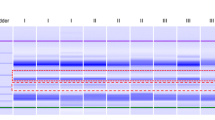Abstract
The type of coagulant used in cheese production is a significant contributor to proteolysis during ripening. The common application of calf rennet faces restrictions due to ethical, cultural, and dietary concerns. This research determined the physicochemical, biochemical, microbiological, and sensory properties of Gouda cheese using fermentation-produced chymosin (FPC) and microbial coagulant (MC) produced from cow and buffalo milk. Buffalo milk was chosen based on its high-fat content and underutilised application in the cheese industry. Gouda cheese from buffalo milk with FPC has the highest fat (38.5%), moisture (38.77%), cheese production yield (12.88%), as well as the highest monounsaturated and polyunsaturated fatty acids. No yeast or mould are detected in Gouda cheese from buffalo milk FPC or buffalo milk MC. Gouda cheese from buffalo milk FPC has a significantly lower total plate count and lactic acid bacteria count. Based on its overall acceptability score, Gouda cheese from buffalo milk FPC can be a good alternative to traditional Gouda cheese from cow milk.
Graphical abstract

Similar content being viewed by others
Data Availability
Not applicable.
References
Y. Jo, D.M. Benoist, A. Ameerally, M.A. Drake, Sensory and chemical properties of Gouda cheese. J. Dairy Sci. 101(3), 1967–1989 (2018)
US Dairy Export Council (2012). Cheese: getting to the next billion. Retrieved from https://blog.usdec.org/usdairyexporter/cheese-getting-to-the-next-billion
A.M.E. Sulieman, O.M. Ohag, H.M. Hassan, E. Abdelmageed, V.M. Veetil, Production and quality evaluation of Gouda cheese produced at small scale level. Int. J. Food Sci. Nutr. Eng. 8, 45–51 (2018)
D.B. Kapadiya, D.B. Prajapati, A.K. Jain, B.M. Mehta, V.B. Darji, K.D. Aparnathi, Comparison of Surti goat milk with cow and buffalo milk for gross composition, nitrogen distribution, and selected minerals content. Veterinary world 9(7), 710 (2016)
J.S. Sindhu, & S. Arora, Milk| Buffalo milk encyclopedia of dairy sciences. 2, 503–511 (2011)
T.X. Yang, F. Wang, H. Li, Q.S. Liu, Q.Y. Li, The nutrition of buffalo milk: a comparison with cow milk. Adv. Mater. Res. 781, 1460–1463 (2013)
S. Arora, Y. Khetra, Buffalo milk cheese, in Cheese. (Academic Press, San Diego, 2017), pp.1093–1101
X. Zheng, X. Shi, B. Wang, A review of the general cheese processing technology, flavor biochemical pathways, and the influence of yeasts in cheese. Front. Microbiol. 12, 703284 (2021)
M. Murlidhar, R. Anusha, O.S. Bindhu, Plant-based coagulants in cheese making, in Dairy engineering. (Apple Academic Press, Palm Bay, 2017), pp.3–35
M. Jacob, D. Jaros, H. Rohm, Recent advances in milk clotting enzymes. Int. J. Dairy Technol. 64(1), 14–33 (2011)
S.K. Garg, B.N. Johri, Application of recombinant calf chymosin in cheesemaking. J. Appl. Anim. Res. 7(2), 105–114 (1995)
G. Berg, P.J. De Koning, Gouda cheesemaking with purified calf chymosin and microbially produced chymosin. Neth. Milk Dairy J. 44(3–4), 189–205 (1990)
W. Park, J. Yoo, S. Oh, J.S. Ham, S.G. Jeong, Y. Kim, Microbiological characteristics of Gouda cheese manufactured with pasteurized and raw milk during ripening using next generation sequencing. Food Sci. Animal Resour. 39(4), 585 (2019)
AOAC, Official methods of analysis, 7th edn. (The Association of Official Analytical Chemists, Rockville, 2000)
N. Grasso, Y.H. Roos, S.V. Crowley, E.K. Arendt, J.A. O’Mahony, Composition and physicochemical properties of commercial plant-based block-style products as alternatives to cheese. Future Foods 4, 100048 (2021)
A.Z. Mohsin, R. Sukor, J. Selamat, A.S.M. Hussin, I.H. Ismail, Chemical and mineral composition of raw goat milk as affected by breed varieties available in Malaysia. Int. J. Food Prop. 22(1), 815–824 (2019)
S. Arora, J.S. Sindhu, Y. Khetra, Buffalo milk. Encycl. Dairy Sci. 3, 784–796 (2022)
B. Amenu, Environmental and dietary effects on milk composition and Cheddar cheese yield (University of Queensland, Brisbane, 2005)
D.M. Barbano, R.R. Rasmussen, Cheese yield performance of fermentation-produced chymosin and other milk coagulants. J. Dairy Sci. 75(1), 1–12 (1992)
M. Jacob, D. Jaros, H. Rohm, The effect of coagulant type on yield and sensory properties of semihard cheese from laboratory-, pilot-and commercial-scale productions. Int. J. Dairy Technol. 63(3), 370–380 (2010)
H.J. Jung, E.J. Ko, H.S. Kwak, Comparison of physicochemical and sensory properties between cholesterol-removed Gouda cheese and Gouda cheese during ripening. Asian Australas. J. Anim. Sci. 26(12), 1773 (2013)
B. Milovanovic, I. Djekic, J. Miocinovic, V. Djordjevic, J.M. Lorenzo, F.J. Barba, D. Mörlein, I. Tomasevic, What is the color of milk and dairy products and how is it measured? Foods 9(11), 1629 (2020)
E.M. Düsterhöft, W. Engels, T. Huppertz, Gouda and related cheeses. Cheese 34, 865–888 (2017)
T.K. Singh, M.A. Drake, K.R. Cadwallader, Flavor of Cheddar cheese: a chemical and sensory perspective. Compr. Rev. Food Sci. Food Safety 2(4), 166–189 (2003)
P.F. Fox, T.P. Guinee, T.M. Cogan, P.L. McSweeney, P.F. Fox, T.P. Guinee, T.M. Cogan, P.L. McSweeney, Microbiology of cheese ripening. Fundam. Cheese Sci. (2017). https://doi.org/10.1007/978-1-4899-7681-9_11
A.A. Hayaloglu, Cheese: Microbiology of cheese. Ref. Module Food Sci. 1, 1–11 (2016)
B. Amenu, H.C. Deeth, The impact of milk composition on cheddar cheese manufacture. Aust. J. Dairy Technol. 62(3), 171 (2007)
Acknowledgements
The Ministry of Education Malaysia funded this study under the Trans-disciplinary Research Grant Scheme (TRGS/1/2020/UPM/01/4/3).
Author information
Authors and Affiliations
Corresponding author
Additional information
Publisher's Note
Springer Nature remains neutral with regard to jurisdictional claims in published maps and institutional affiliations.
Rights and permissions
Springer Nature or its licensor (e.g. a society or other partner) holds exclusive rights to this article under a publishing agreement with the author(s) or other rightsholder(s); author self-archiving of the accepted manuscript version of this article is solely governed by the terms of such publishing agreement and applicable law.
About this article
Cite this article
Mohsin, A.Z., Hui Ci, N., Ismail, A.R. et al. Gouda cheese with different coagulants and types of milk: physicochemical, biochemical, microbiological, and sensory properties. Food Measure 18, 1065–1074 (2024). https://doi.org/10.1007/s11694-023-02218-7
Received:
Accepted:
Published:
Issue Date:
DOI: https://doi.org/10.1007/s11694-023-02218-7




